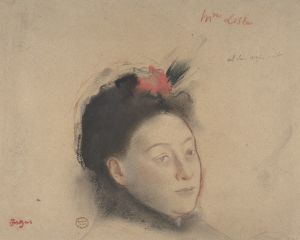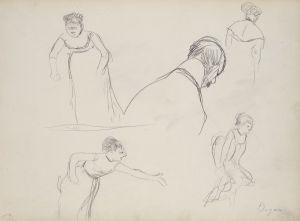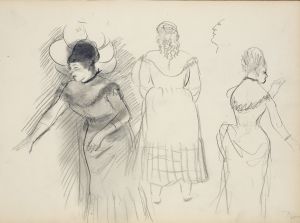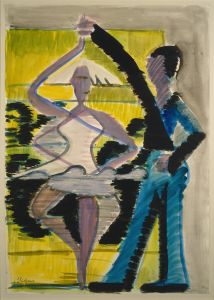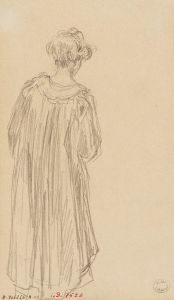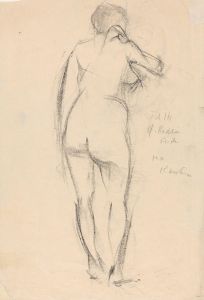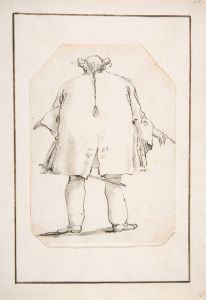
Woman Viewed from Behind
A hand-painted replica of Edgar Degas’s masterpiece Woman Viewed from Behind, meticulously crafted by professional artists to capture the true essence of the original. Each piece is created with museum-quality canvas and rare mineral pigments, carefully painted by experienced artists with delicate brushstrokes and rich, layered colors to perfectly recreate the texture of the original artwork. Unlike machine-printed reproductions, this hand-painted version brings the painting to life, infused with the artist’s emotions and skill in every stroke. Whether for personal collection or home decoration, it instantly elevates the artistic atmosphere of any space.
"Woman Viewed from Behind" is a pastel drawing by the renowned French artist Edgar Degas, who is celebrated for his innovative contributions to the art world during the late 19th century. Degas is often associated with the Impressionist movement, although he preferred to be known as a realist. His works are characterized by their exploration of movement, unusual perspectives, and candid portrayals of modern life.
This particular artwork, "Woman Viewed from Behind," exemplifies Degas's fascination with the human form and his skillful use of pastels. Degas frequently depicted women in various states of undress, capturing intimate and private moments with a sense of immediacy and authenticity. His approach often involved unconventional angles and perspectives, which can be seen in this piece.
The drawing portrays a woman from behind, focusing on the contours and curves of her body. Degas's use of pastels allows for a soft yet vibrant depiction, highlighting the texture of the skin and the play of light and shadow. The choice to depict the subject from behind adds a layer of anonymity and universality to the figure, inviting viewers to appreciate the form without the distraction of facial features or expressions.
Degas's interest in depicting women in such intimate settings was part of a broader trend in his work, where he sought to capture the unguarded moments of everyday life. His subjects often included ballet dancers, laundresses, and women at their toilette, reflecting both the beauty and the mundane aspects of contemporary society. This focus on the private and often unseen aspects of life was a departure from the grand historical and mythological themes that dominated much of the art of his time.
The artist's technique in "Woman Viewed from Behind" demonstrates his mastery of pastels, a medium he favored for its ability to convey both line and color with immediacy and vibrancy. Degas's pastel works are noted for their dynamic compositions and the way they capture the fleeting effects of light and movement.
While the exact date of creation for "Woman Viewed from Behind" is not specified, it is consistent with Degas's body of work from the late 19th century, a period during which he produced many of his most acclaimed pieces. His innovative use of pastels during this time contributed significantly to the medium's acceptance as a serious art form.
Degas's work, including "Woman Viewed from Behind," continues to be celebrated for its technical brilliance and its insightful portrayal of human subjects. His ability to capture the essence of a moment with both sensitivity and precision has left a lasting impact on the art world, influencing countless artists who followed in his footsteps.









